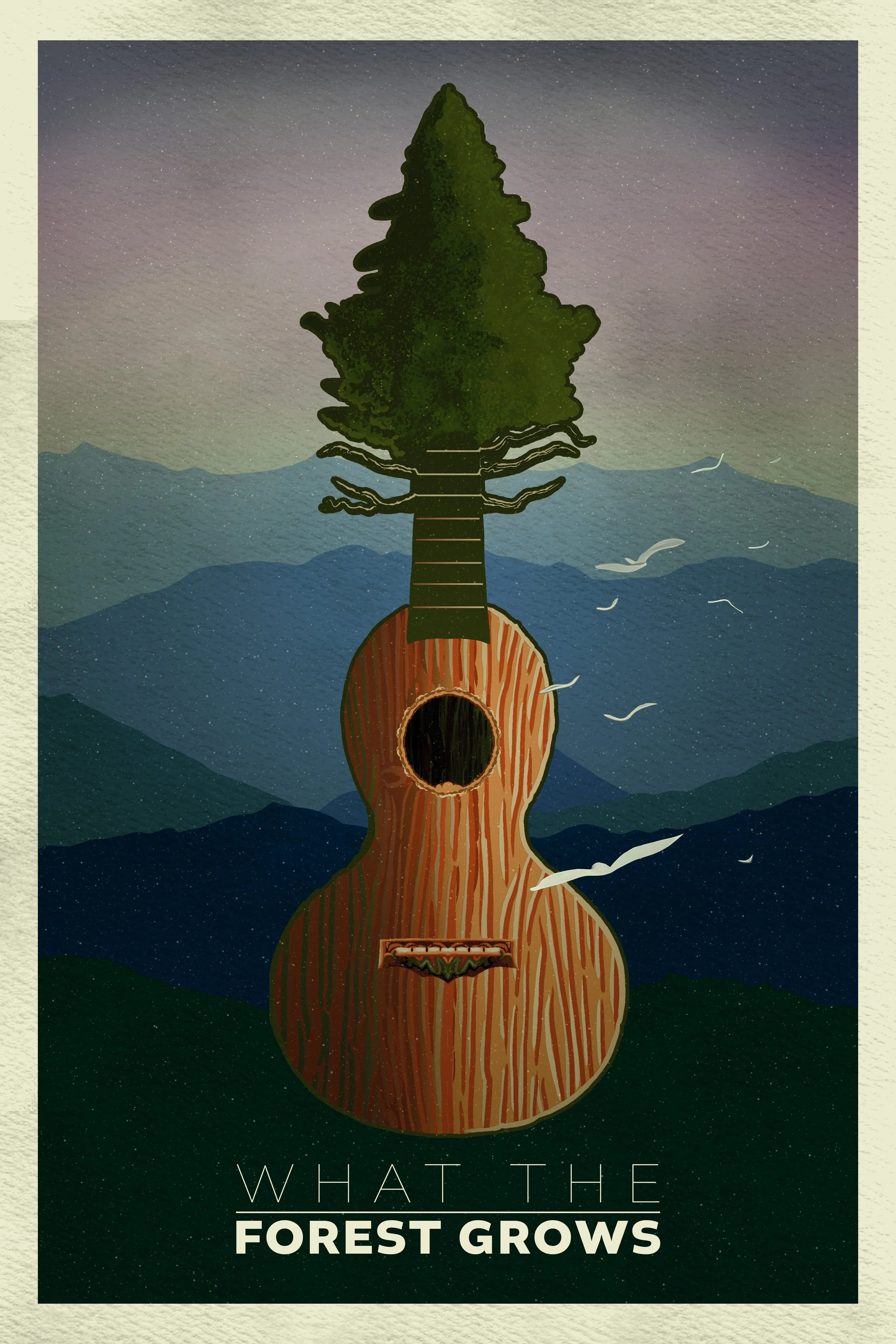Welcome to What the Forest Grows
Hi. I’m Greg Inda. I’m from Chicago and I’ve been a professional photographer for over 15 years. I love what I do and I love this project that has been percolating in my mind for over 2 years.
What the Forest Grows.
What is it and how did it come to be? I’m going to make what feels like a few embarrassing confessions. When I was a teenager my friends and I decided to form a band before any of us knew how to play an instrument. We just kind of decided which archetypes we best fit into. As a group we decided I was the bass player. So when I had an opportunity to buy one from a friend, I jumped at it. (My friends did not jump at their instruments, and sadly that band never happened. Who can relate?) The bass was a Fender P-Bass style knockoff. It was painted black and had a white pick guard. After playing for a couple months I decided to get a guitar just to add to my musical literacy and try some different stuff. I looked around for the guitar that best fit “me”, it was the mid 90’s and Wes Borland from Limp Bizkit was on the cover of all the guitar magazines. He played Ibanez guitars exclusively, I think, at the time. So that’s what I got.
What strikes me looking back on how I viewed instruments is how little the materials mattered to me. The wood of that Ibanez was encased in the black paint job like a cake covered in icing. There was no way to know what flavor was inside. Brands and vibes mattered more than materials. Nirvana was smashing guitars at the end of gigs. Instruments were an accessory you wore to show who you were. Materials could look cool, but for me they were an afterthought.
Flash forward 20 years. I’m sitting on my couch playing my Alvarez acoustic. Just noodling around. As a player I’d hit a plateau. Intermediate level. Bar chords. Simple melodies. Just enough to be happy and just enough to be frustrated. I was at a spot in my life where I didn’t want to put in the work that would bring me to the next level. But I started to get curious about building instruments. I started looking at my guitars and basses just a little bit differently. Why does Fender have a different headstock from a Gibson? What are the different woods on these acoustics? The materials and design choices became interesting questions that I wanted to find answers to.
I started looking for guitar building classes. At the time I didn’t know what a Luthier was. So my searching was pretty remedial.
Years earlier my mom had worked for a Swiss chip carver. He would teach periodic classes at a folk school in North Carolina. One of the perks was getting a free class voucher for later in the year. He would often gift those vouchers to my mom and she’d ask me if I was interested in taking classes. As a teenager I was too cool to take classes at a folk school, but as an adult the concept of cool starts to shift. And at John C Campbell Folk School I found a dobro building class that was just a few weeks away. I signed up and started my journey.
Over the next several years I took lots of classes. I built the dobro, an acoustic guitar, three banjos, three fender style tube amps, a washtub bass, a fiddle, and for the past six years I’ve been 5 months from finishing an electric guitar (a long way to say I haven’t finished it yet). I really love classes. I love the camaraderie that you get in a woodshop, everyone building towards something. I love the intense focus on details and bringing something from your mind into the world. I love the exchange of knowledge and experience. The more time I spent in these classes the more appreciation I had for the materials and craft that create an instrument.
One really cool thing about the folk school is that it’s set in the Appalachian mountains. Walking from your housing to the woodshop you’re surrounded by beautiful North American hardwood trees that you’re using in these instrument builds. And on those walks through the forest it’s difficult not forge a connection between the environment and your project.
That’s What the Forest Grows. It’s finding ways to link the instruments and music back to the forest. That’s the core of this project and I hope you join me on this journey as I find new connections. And I approach this project as someone who doesn’t have all the answers, I think I have a lot of the right questions.
Click on images to view in a lightbox.












